The Influence of External Environmental Conditions on Properties of Ceramic Building Materials with Waste Material Additives
Abstract
1. Introduction
2. Characteristics of Materials Used for Production of Tested Ceramic Building Materials (Clay Masonry Units)
3. Description of Testes Samples
- Group A consisted of brick samples extracted for testing purposes from facing walls of religious buildings shown in Figure 1, operated in natural outdoor environmental conditions for approximately 35 years. The number of tested samples was 18 and they were chosen randomly. The samples were cut from the wall using an angle grinder, then cleaned in laboratory conditions from any mortar residues and cut to the dimensions of 60 × 120 × 65 mm.
- Group B consisted of brick samples extracted from the same batch of masonry units as group A and stored in laboratory conditions for 35 years at 20 °C (±2 °C) and relative air humidity of 50% (±5%). These masonry units remained in the laboratory as extra units that were obtained during the construction of these buildings in order to perform strength tests. In total, 18 tested samples, also dimensioned as 60 × 120 × 65 mm, were cut from these units.
4. Description of the Test
4.1. Water Absorption by Capillary Action
- initial rate of water absorption, in kg/(m2·min)
- water absorption due to capillary rise by capillary action, in kg/(m2·)
- mso,s—sample weight after water saturation soaking at time t, (g),
- mdry,s—sample weight after drying, (g),
- tso—saturation soakingtime of initial absorption = 1, (min),
- ts—saturation soakingtime, (min),
- As—sample area of water rise, (m2).
4.2. Water Absorption Test
- Cm—weight of a sample saturated soaked with water, g,
- Cs—weight of a dry sample, g.
4.3. Porosity Test Using Mercury Intrusion Porosimetry
- IVnondest—% share of meso- and macropores larger than 3.0 µm in diameter,
- IVfrost—% share of mesopores with diameters in the range of 0.1 to 3.0 µm,
- IVsmall—% share of nanopores smaller than 0.1 µm in diameter.
5. Test Results and Discussion
5.1. Water Absorption by Capillary Action
5.2. Water Absorption
5.3. Porosity
6. Summary
Author Contributions
Funding
Institutional Review Board Statement
Informed Consent Statement
Data Availability Statement
Conflicts of Interest
References
- Abu Bakar, B.H.; Wan Ibrahim, M.H.; Megat Johari, M.A. A review: Durability of fired clay brick masonry wall due to salt attack. Int. J. Integr. Eng. 2011, 1, 111–127. [Google Scholar]
- Hansen, W.; Kung, J.H. Pore structure and frost durability of clay bricks. Mater. Struct. 1988, 21, 443–447. [Google Scholar] [CrossRef]
- Hoła, A. Methodology for the in situ testing of the moisture content of brick walls an example of application. Arch. Civil Mech. Eng. 2020, 20, 1–13. [Google Scholar] [CrossRef]
- Hoła, J. Degradation of historic buildings due to excessive moisture–selected issues. BudownictwoiArchitektura 2018, 17, 133–148. (In Polish) [Google Scholar] [CrossRef]
- Koroth, S.R. Evaluation and Improvement of Frost Durability of Clay Bricks. Ph.D. Thesis, Concordia University, Montreal, QC, Canada, 1997. [Google Scholar]
- Mensinga, P. Determining the Critical Degree of Saturation of Brick Using Frost Dilatometry. Master’s Thesis, University of Waterloo, Waterloo, ON, Canada, 2009. [Google Scholar]
- Litvan, G. Freeze-Thaw Durability of Porous Building Materials, Durability of Building Materials and Components ASTM STP 691; NRC Publications Archive: Vancouver, BC, Canada, 1980; pp. 455–463. [Google Scholar]
- EN 771-1+A1: 2015-10. Specification for Masonry Units. Clay Masonry Units; British Standards Institution: London, UK, 2015. [Google Scholar]
- Jarmontowicz, R.; Babik, W. Absorpcja Wody Ceramicznych Wyrobów Budowlanych. Ceramika Budowlana. Available online: http://www.zwiazek.org.pl/kwartalnik (accessed on 13 March 2021).
- EN 1996-2:2006. Eurocode 6 Design of Masonry Structures–Part 2: Design Considerations, Selection of Materials and execution of Masonry; British Standards Institution: London, UK, 2006. [Google Scholar]
- Maage, M. Frost resistance and pore size distribution in bricks. Mater. Struct. 1984, 17, 345–350. [Google Scholar] [CrossRef]
- Herget, F.A.; Crooks, R.W.; Winslow, D.N. Variability within single projects of physical properties of face brick as related to potential durability. In Proceedings of the 6th Canadian Masonry Conference, Department of Civil Engineering, University of Saskatchewan, Saskatoon, SK, Canada, 15–17 June 1992; pp. 417–428. [Google Scholar]
- Nieminen, P.; Romu, P. Porosity and Frost Resistance of Clay Bricks; Brick and Block Masonry; De Courcy, J.W., Ed.; Elsevier Applied Science: London, UK, 1988; Volume 1, pp. 103–109. [Google Scholar]
- Winslow, D. Predicting the durability of paving bricks. J. Test. Eval. 1991, 19, 29–33. [Google Scholar] [CrossRef]
- Mallidi, S.R. Application of mercury intrusion porosimetry on clay bricks to assess freeze-thaw durability. A bibliography with abstracts. Constr. Build. Mater. 1996, 10, 461–465. [Google Scholar] [CrossRef]
- Elert, K.; Culturone, G.; Rodriguez-Navarro, C.; Pardo, E.S. Durability of bricks used in the conservation of historic buildings—Influence of composition and microstructure. J. Cult. Herit. 2003, 4, 91–99. [Google Scholar] [CrossRef]
- Koniorczyk, M.; Gawin, D.; Schrefler, B. Multiphysics for spalling prediction of brick due to in pore salt. Comput. Struct. 2018, 196, 233–245. [Google Scholar] [CrossRef]
- Gawin, D.; Koniorczyk, M.; Pesavento, F. Application of Multiphase Porous Media Mechanics for Assessment of Building Materials Durability. In Proceedings of the SolMech 2018: 41st Solid Mechanics Conference, Warsaw, Poland, 27–31 August 2018. [Google Scholar]
- Ravaglioli, A. Evaluation of frost resistance of pressed ceramic products based on the dimensional distribution pores. Trans. Br. Ceram. Soc. 1976, 76, 92–95. [Google Scholar]
- Robinson, G.C. The relation between pore structure and durability of bricks. Ceram. Bull. 1984, 63, 295–300. [Google Scholar]
- Bellanger, M.; Homand, F.; Remy, J.M. Water behaviour in limestones as a function of pore structure: Application to frost resistance of some lorrainelimestones. Eng. Geol. 1993, 36, 99–108. [Google Scholar] [CrossRef]
- Scherer, G.W. Crystallisation in pores. Cem. Concr. Res. 1999, 29, 1347–1358. [Google Scholar] [CrossRef]
- Abdrakhimov, Z.; Abdrakhimova, S. Chemical-elemental, phase composition and porosity structure of ceramic samples from Cham tower (Vietnam) more than 1000 y/o. Glass Ceram. 2018, 75, 33–38. [Google Scholar] [CrossRef]
- Cultrone, G.; Sebastian, E.; Elert, K.; De la Torre, M.J.; Cazalla, O.; Rodriguez-Navarro, C. Influence of mineralogy and firing temperature on the porosity of bricks. J. Eur. Ceram. Soc. 2004, 24, 547–564. [Google Scholar] [CrossRef]
- Tang, Y.; Shao, Z.; Xu, T. Pore structure of ancient Chinese bricks under environmental vicissitudes. J. Civ. Eng. 2016, 20, 1895–1902. [Google Scholar] [CrossRef]
- Kung, J.H. Frost durability of Canadian clay bricks. In Proceedings of the 7th International Brick Masonry Conference, Melbourne, Australia, 17–20 February 1985; Brick Development Research Institute, University of Melbourne, Department of Architecture Building: Melbourne, Australia, 1985; pp. 245–251. [Google Scholar]
- Stryszewska, T.; Kanka, S. Forms of damage of bricks subjected to cyclic freezing and thawing in actual conditions. Materials 2019, 12, 1165. [Google Scholar] [CrossRef] [PubMed]
- Perrin, B.; Vu, N.A.; Multon, S.; Voland, T.; Ducroquetz, C. Mechanical behaviour of fired clay materials subjected to freeze–thaw cycles. Constr. Build. Mater. 2011, 25, 1056–1064. [Google Scholar] [CrossRef]
- EN 772-11:2011. Methods of Test for Masonry Units. Determination of Water Absorption of Aggregate Concrete, Autoclaved Aerated Concrete, Manufactured Stone and Natural Stone Masonry Units Due to Capillary Action and the Initial Rate of Water Absorption of Clay Masonry Units; British Standards Institution: London, UK, 2011. [Google Scholar]
- EN 772-21:2011. Methods of Test for Masonry Units. Determination of Water Absorption of Clay and Calcium Silicate Masonry Units by Cold Water Absorption; British Standards Institution: London, UK, 2011. [Google Scholar]
- Naziemiec, Z.; Saramak, D. Problems of sampling and sizing of mineral aggregate samples. Min. Sci. 2013, 136, 157–167. [Google Scholar]
- EN 932-2:1999. Tests for General Properties of Aggregates. Methods for Reducing Laboratory Samples; British Standards Institution: London, UK, 1999. [Google Scholar]
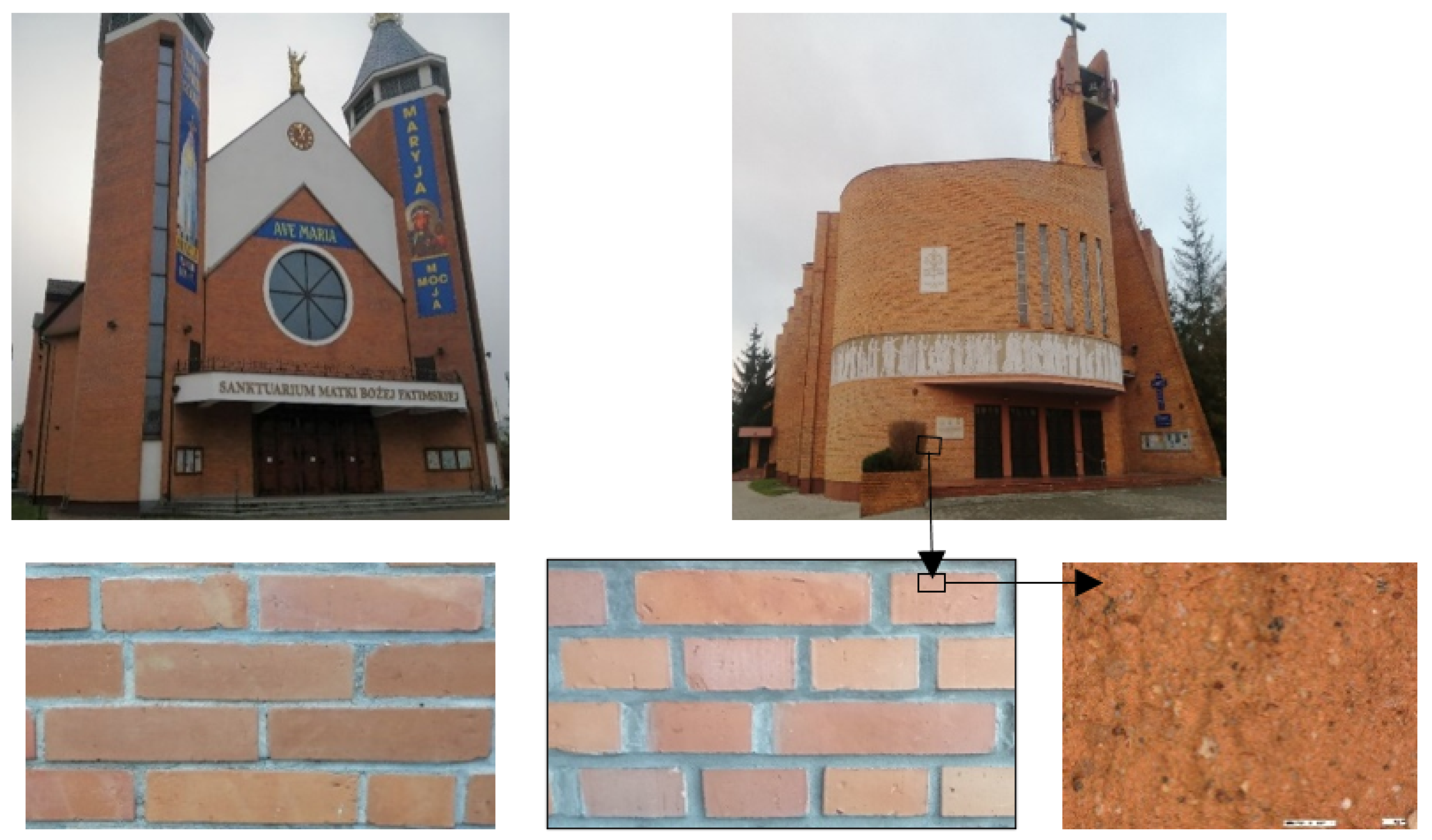

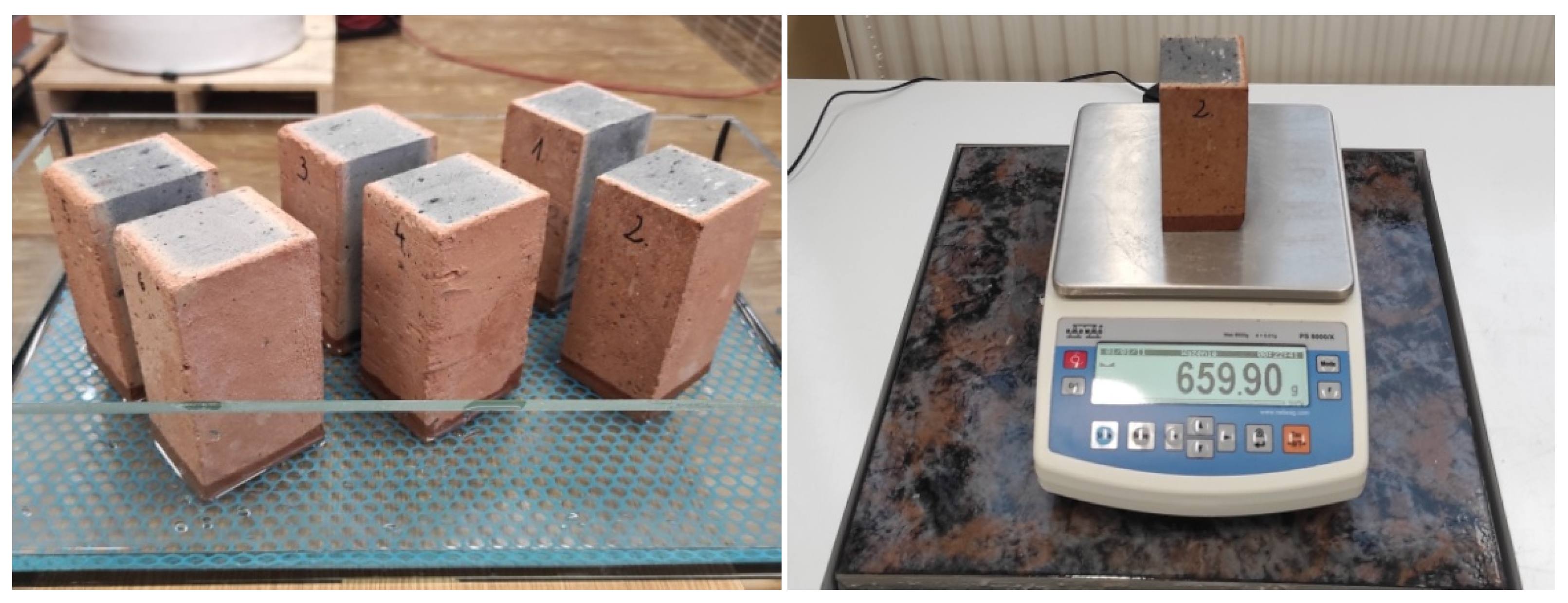


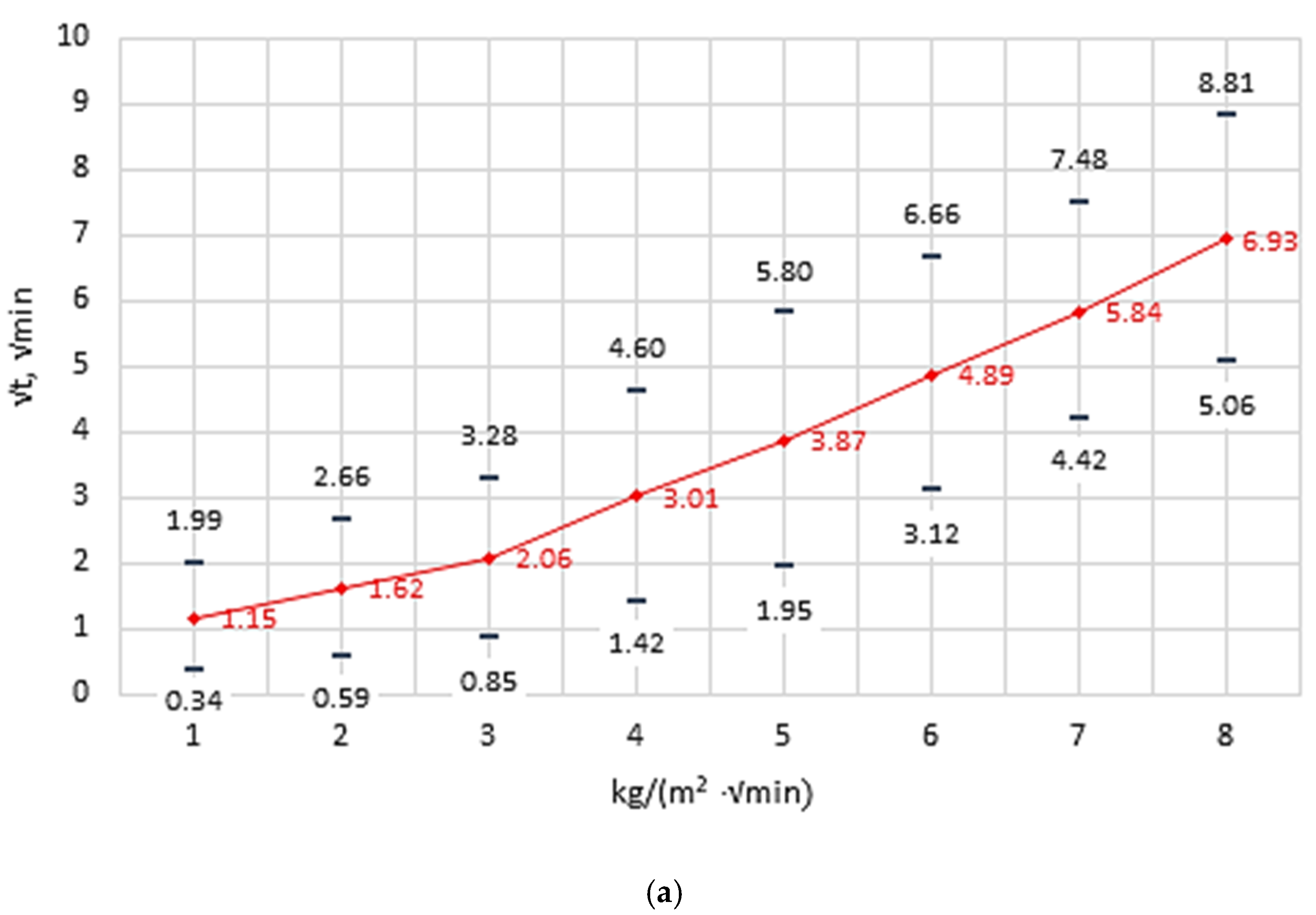
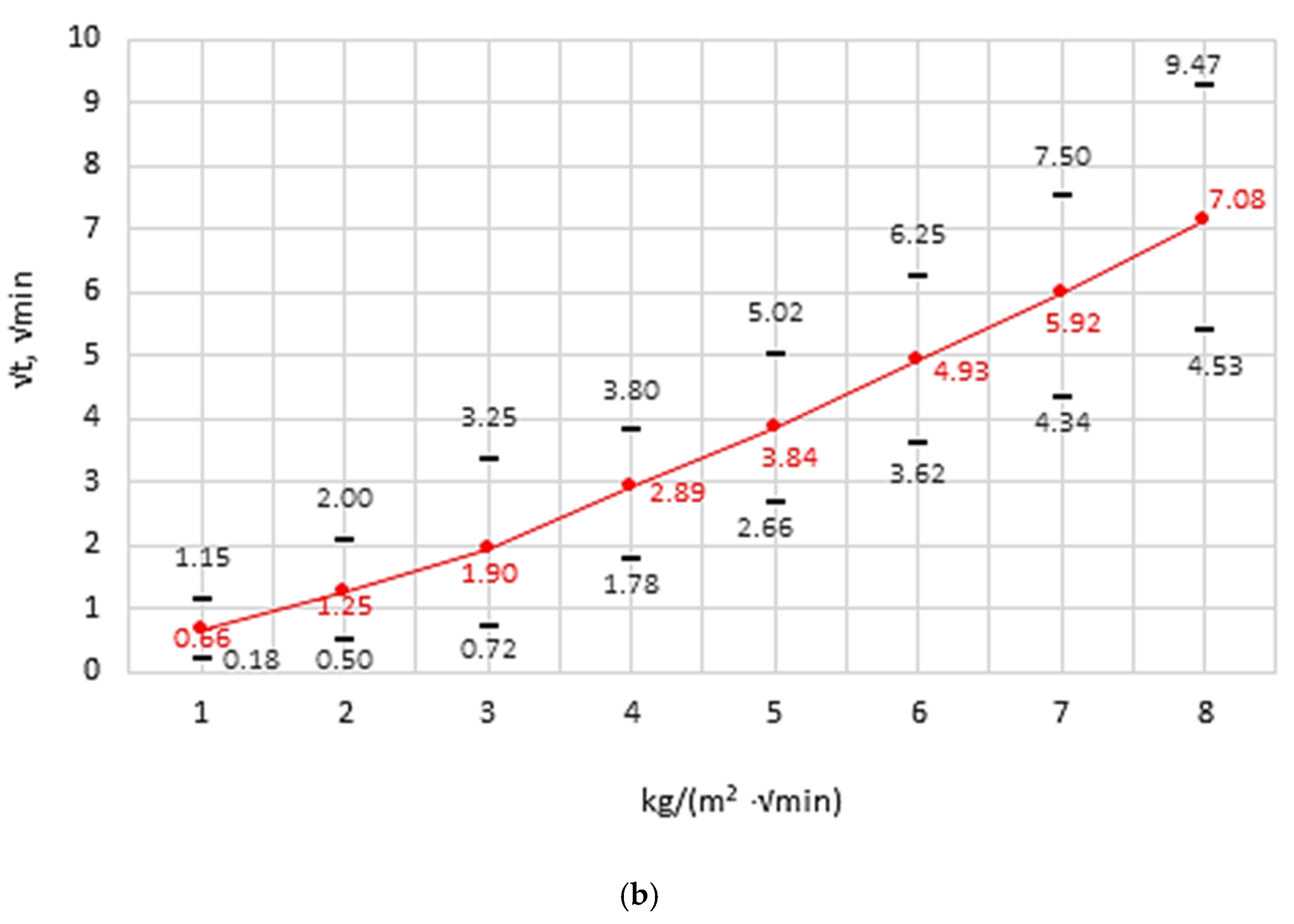
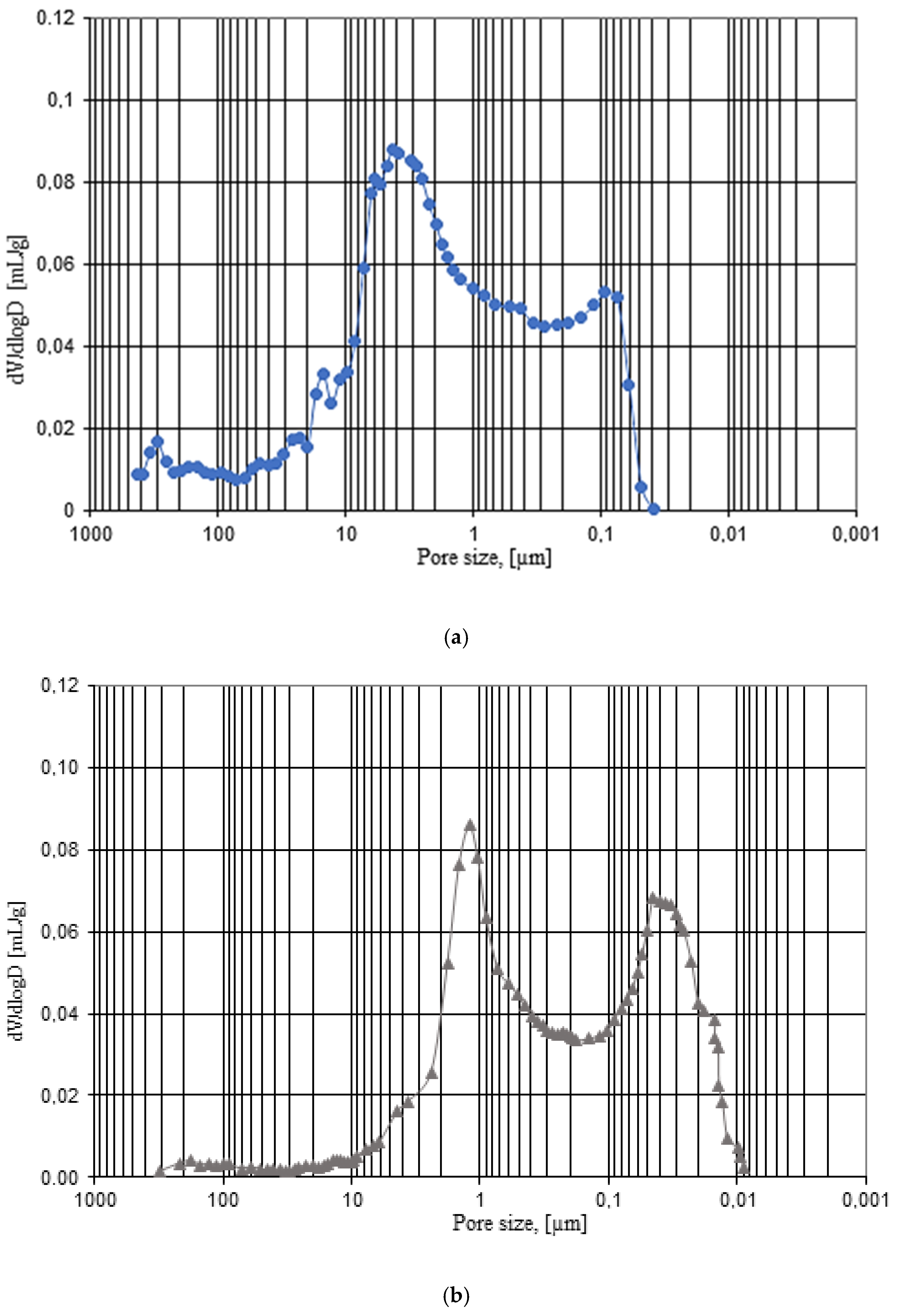
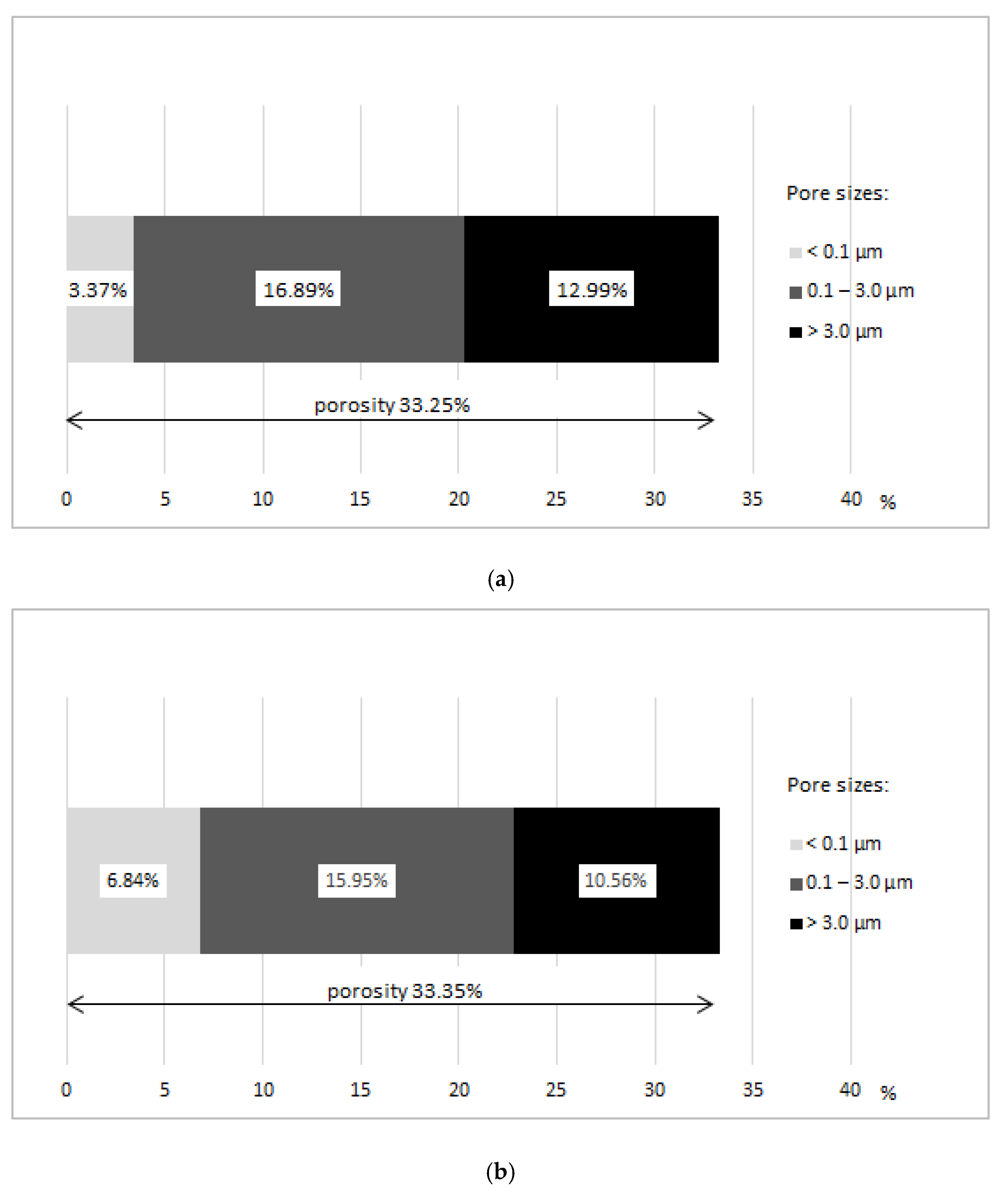
| Fraction Name | Average Content (%) |
|---|---|
| clay, below 0.002 mm | 40.4 |
| silt, from 0.002 to 0.05 mm | 36.1 |
| sand, from 0.05 to 2 mm | 23.1 |
| gravel, from 2 to 5 mm | 0.4 |
| Compound Name | Average Content (%) | Range (%) |
|---|---|---|
| SiO2 | 62.60 | 53.48–70.72 |
| SO3 | 0.31 | 0.14–0.75 |
| CaO | 2.23 | 0.83–8.02 |
| MgO | 1.18 | 0.60–1.66 |
| Al2O3 | 17.06 | 8.11–22.63 |
| Fe2O3 | 5.27 | 3.44–69.8 |
| Na2O | 0.64 | – |
| K2O | 1.97 | 1.80–2.12 |
| TiO2 | 0.30 | – |
| Loss on ignition | 9.40 | 7.22–14.24 |
| Sample No. | Percent Retained on Sieves (%) | ||
|---|---|---|---|
| 0.25 mm | 0.063 mm | Total | |
| I | 6.60 | 35.50 | 42.35 |
| II | 6.00 | 34.80 | 40.90 |
| III | 6.45 | 35.30 | 41.40 |
| Average value | 6.35 | 35.20 | 41.55 |
| Raw Materials Name | Molding Sand Share (%) |
|---|---|
| Pliocene clays | 55 |
| Ash–slag mixture | 38 (38–40) |
| Wood sawdust | 7 (5–7) |
| Quality Parameters | Range | Average Value |
|---|---|---|
| compressive strength | 16.0–24.0 MPa | 19.5 MPa |
| content of granular marl with more than 0.5 mm fraction | 0–0.40% | 0.031% |
| efflorescence of soluble salts | - | none or minimal irremovable bloom |
| Test | Group A | Group B |
|---|---|---|
| water absorption initial (kg/(m2·min)) | 0.34–1.99 Average value 1.15 | 0.18–1.15 Average value 0.66 |
| water absorption (%) | 12.44–16.66 Average value 14.55 | 11.73–15.96 Average value 13.84 |
| general porosity (%) | 33.25 | 33.35 |
| bulk density (g/cm3) | 1.668 | 1.680 |
Publisher’s Note: MDPI stays neutral with regard to jurisdictional claims in published maps and institutional affiliations. |
© 2021 by the authors. Licensee MDPI, Basel, Switzerland. This article is an open access article distributed under the terms and conditions of the Creative Commons Attribution (CC BY) license (https://creativecommons.org/licenses/by/4.0/).
Share and Cite
Wesołowska, M.; Kaczmarek, A.; Hoła, J. The Influence of External Environmental Conditions on Properties of Ceramic Building Materials with Waste Material Additives. Materials 2021, 14, 2982. https://doi.org/10.3390/ma14112982
Wesołowska M, Kaczmarek A, Hoła J. The Influence of External Environmental Conditions on Properties of Ceramic Building Materials with Waste Material Additives. Materials. 2021; 14(11):2982. https://doi.org/10.3390/ma14112982
Chicago/Turabian StyleWesołowska, Maria, Anna Kaczmarek, and Jerzy Hoła. 2021. "The Influence of External Environmental Conditions on Properties of Ceramic Building Materials with Waste Material Additives" Materials 14, no. 11: 2982. https://doi.org/10.3390/ma14112982
APA StyleWesołowska, M., Kaczmarek, A., & Hoła, J. (2021). The Influence of External Environmental Conditions on Properties of Ceramic Building Materials with Waste Material Additives. Materials, 14(11), 2982. https://doi.org/10.3390/ma14112982







